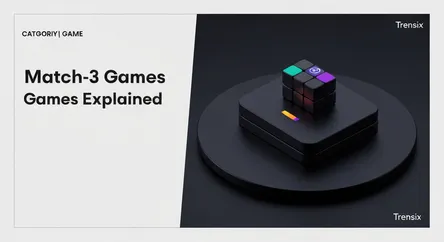Game
Match-3 Games Explained

Discover the simple yet addictive world of match-3 games. Learn what this popular puzzle mechanic is and why it dominates mobile gaming.
What is it?
Match-3 is a core gameplay mechanic found in puzzle video games. The objective is to manipulate items on a grid to create a line or cluster of at least three identical pieces. When a match is made, the items disappear, and new ones fall into place, potentially creating chain reactions or 'cascades.' The player's goal is typically to reach a certain score or clear specific tiles within a limited number of moves or time. Iconic examples that have popularized this genre include Bejeweled and the global phenomenon Candy Crush Saga, which added layers of strategy with special candies and level objectives.
Why is it trending?
The appeal of match-3 games lies in their accessibility and satisfying feedback loop. The rules are incredibly simple to grasp, making them perfect for a broad, casual audience. They are designed for short bursts of play, fitting easily into daily commutes or breaks. The vibrant visuals, rewarding sound effects, and the psychological satisfaction of clearing the board create a compelling and often addictive experience. The free-to-play model, common in mobile gaming, has allowed these games to reach a massive user base worldwide.
How does it affect people?
For most, match-3 games are a fun, low-stress way to pass the time and engage in light problem-solving. They can serve as a mental distraction or a relaxing activity. However, the design of many match-3 games incorporates mechanics that encourage continuous play and in-app purchases. Features like limited lives that regenerate over time or difficult levels that tempt players to buy power-ups can lead some individuals to spend significant amounts of time and money. This mechanic has fundamentally shaped the business model of the casual and mobile game industry.